Foiling for Dummies: The Boat
Published on October 27th, 2017
The development of the all-new TF10 foiling trimaran continues as it seeks to be provide a flying experience to sailors of all skill levels – and not just experts. Here is an update on the project from Thijs van Riemsdijk of DNA Performance Sailing.
Port Ginesta, Spain (October 27, 2017) – Thanks to an ingenious combination of Z-Foil Technology and electronic foil control, the TF10 replicates much of the performance of a modern foiling America’s Cup boat but without the crashes, flips, or power requirements.
The 36-foot long racing sailboat is versatile and exciting in all weather, easily sailing at 2-3 times the wind speed in lighter air and comfortably flying along at 25-30 knots in stiffer breeze.
Designed by Southern California-based Morrelli & Melvin, the same team behind both the first foiling multihull (Team New Zealand’s AC72 Aotearoa) and the foiling Olympic catamaran, Nacra 17, the TF10 was commissioned by a group of Newport, Rhode Island-based sailing enthusiasts looking for something entirely different.
“As a group, we knew we wanted something that pushed the boundaries of what is possible in foiling boat design, and it looks like the designers and builders have created something completely unique and exceptional,” said Dr. Malcolm Gefter, owner of Hull #1 and the driving force behind the new boat and class.
Dr. Gefter explained that he and rest of the TF-10’s first owners are all experienced racers trying to create a class with state-of-the-art performance but without the kind of “arms race” and cost escalation from which most grand prix sailing classes suffer.
Netherlands-based builder DNA Performance Sailing conducted two valuable weeks of sailing and sea trials along Spain’s Costa Brava, assisted by multiple catamaran racing World Champion and DNA advisor Mischa Heemskerk , who said the learning curve was ‘steep but manageable.’
“We’ve had dozens of people steering and crewing the boat here in 14 days, and not a single person got off the boat without a big smile on their face,” said Heemskerk, referring to not only potential customers, but also the journalist judges who came specifically to Spain to test the TF10 and several other yachts nominated for the prestigious European Yacht of the Year competition.
“A number of the journalists seemed uncomfortable at first, going from the other champagne-filled charter yachts to our little speed racer, but after a few minutes behind the tiller, we couldn’t get them to put it down!” he said.
As the testing period entered its final phase on Wednesday (Oct 25) morning, a perfect Northerly breeze rolled in. Led by Heemskerk at the helm, the full crew immediately set off for another session, this time with Spanish yachting photographer Tomàs Moya in tow.
With a crew of experienced sailors aboard the racing yacht and for the first time, no guests, crew continued to test new settings without drama. The boat easily accelerated past 25 knots in the quiet, flat water – a perfect beginning to a day scheduled for the new owner’s first sail since the boat was splashed in Holland early this summer.
But just minutes into the sail, a loud “bang” announced the day wasn’t as perfect as they’d hoped: the high-modulus carbon fiber mast crumpled to the deck immediately, breaking in parts on the way down.
A-Class and F-18 catamaran world champion Heemskerk is no stranger to dismastings, especially with his extensive work on the fastest and most modern of foiling boats, but he was surprised to see the mast let go in such light air.
“It seems we may be quite a bit faster than the simulations predicted, which means we could be developing too much power for the mast design,” said the Dutch racer, who said breakages have been an important part of the development of all foiling boats – especially the big ones.
“Foiling in big yachts has only been possible for a few short years, so sea and sail trials are an extremely important tool to find the weak links in these cutting-edge designs,” he said.
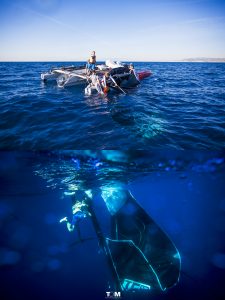 Heemskerk said the yacht’s designers and builders are already investigating the breakage to determine what modifications are needed before the production run gets fully underway, and they’re confident the fix isn’t complicated.
Heemskerk said the yacht’s designers and builders are already investigating the breakage to determine what modifications are needed before the production run gets fully underway, and they’re confident the fix isn’t complicated.
“The silver lining here is that we had a great month of sailing with a respectable showing for the Yacht of the Year competition, we learned a ton about the boat, and aside from the mast and a couple of insignificant bits and pieces, the boat performed flawlessly,” said Heemskerk.
As a longtime research scientist and pharmaceutical inventor, Gefter knows firsthand the tough road that innovation can require, and the former Professor of Biochemistry Emeritus at MIT was introspective when he saw the topless racing machine sitting at the dock.
“The first of what my students used to call ‘Gefter’s Laws’ may apply here: If an experiment comes up with exactly what the result you wanted on the first try, you will never be able to replicate that experiment again,” said the former professor, adding that “We wanted to change this sport, which is why we picked designers and a builder who truly understand how to push the envelope, and if it doesn’t break in the experimental phase, you just are not trying enough.”
Dr. Gefter said he was pleased the team was working so hard to identify any issues, and that he was confident the boat would ready to race in South Florida over the coming winter.
Additional details: https://www.tf10class.com
Photos: Tomàs Moya/DNA Performance Sailing


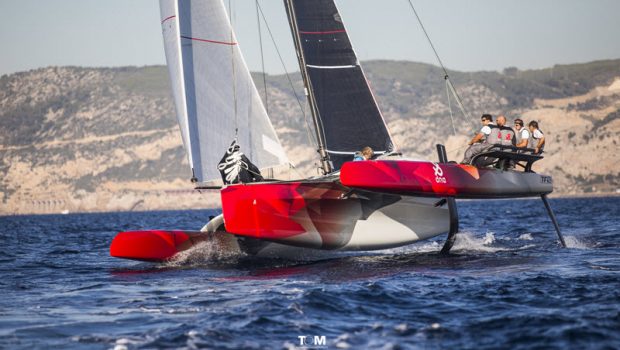

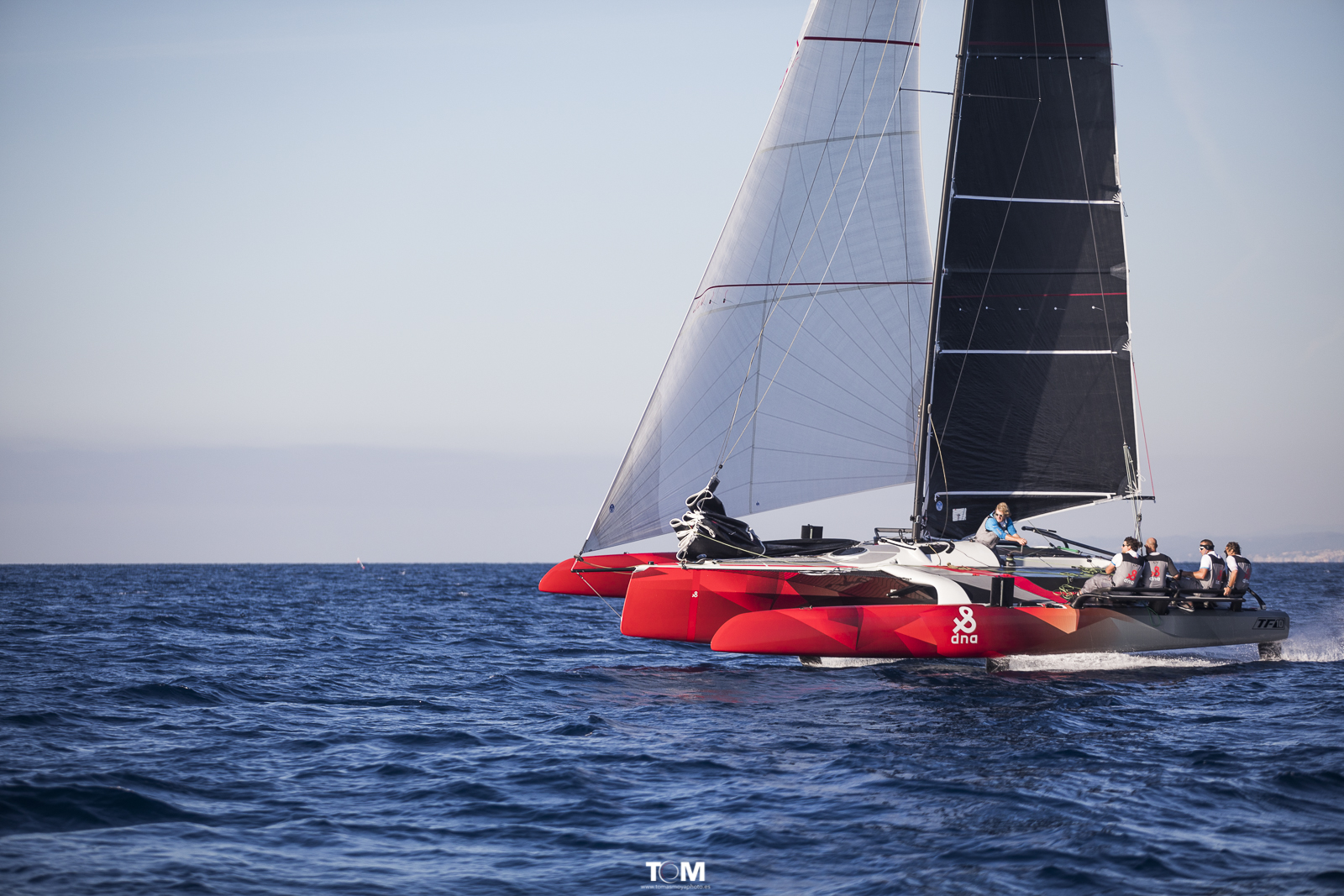

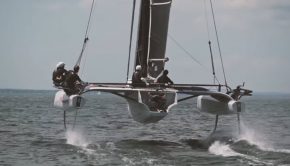
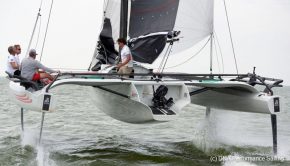
 We’ll keep your information safe.
We’ll keep your information safe.